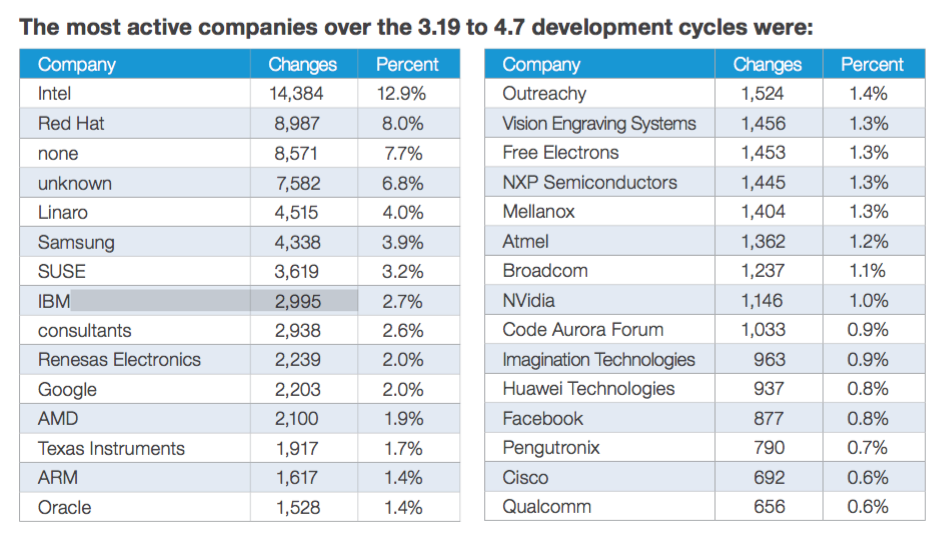

It is possible to install software not packaged by the distributor, but there are a number of potential pitfalls to be aware of if you choose this route: The starting point should be a list of software requirements, against which various distributions may be assessed. The major distributions generally include all of the packages typically needed by a business, but if you are aware that you have specific less common requirements, this is an area to check. Neither is right nor wrong: it’s just a different philosophy. Using the same distributions as an example, Debian favours multiple smaller packages to enable more granular installations whereas Red Hat tends more towards larger “kitchen sink included” packages. The package count is deceptive in other ways, too. At the time of writing, Red Hat Enterprise Linux, for example, has approaching 20,000 packages available whereas Debian has almost three times that number – but if Red Hat Enterprise Linux has all the software you need, it could still be the right choice. Software for Linux is typically provided in “packages”, and the number of packages available varies greatly between distributions. For some, vendor support for either an application or the Linux distribution itself is a non-negotiable requirement, in which case the choice of Linux distributions will be very small. There are many companies other than the vendors who will provide support services, and there’s certainly no rule that states the vendor will always provide the most appropriate support package for every business. This does not mean that their products will not work on other distributions (far from it), but if support from the software vendor itself is important to you, this again will restrict your choice of distribution.

Some software application vendors will only support their products on specific Linux distributions.

#ALL LINUX VERSIONS LIST HOW TO#
On the positive side, some skilled Linux engineers are naturally attracted towards such organisations, and it would be reasonable to expect that they have deep understanding of how to use that particular distribution in a business setting. That has both positive and negative connotations, but unless you too represent a large company, you may find that they lack the in-depth knowledge of your infrastructure. The Linux distributions that offer vendor support are, almost by definition, large companies themselves. If you do choose to use vendor support, remember that they will only support their distribution, so if you end up using multiple distributions you may need multiple support arrangements, which isn’t ideal. Bear in mind that “lack of vendor support” does not mean “no support available”: there are plenty of other support options for those distributions other than the vendor. If, for whatever reason, vendor support is important to you, your choice of distributions is very limited. Availability of vendor supportĪ few distributions are created, maintained and supported by commercial companies for example, Red Hat and SUSE Linux. Each distribution has features that differentiate it from the others, but most of the differences come down to one or more of the following five aspects: 1. Much of the supporting software (operating system utilities, application programs, etc) are also common amongst most Linux distributions for example, the popular web server, Apache, is available on just about every Linux distribution. There are, literally, hundreds of Linux distributions out there, so how do you decide which Linux distribution is the most appropriate one for your business? For some, external factors such as corporate policy or the application software vendor may reduce or even eliminate choice, but for many the decision is more open.Īlthough the versions of the software used will vary, the vast majority of Linux distributions centre around the Linux kernel, which is the heart of the system.


 0 kommentar(er)
0 kommentar(er)
